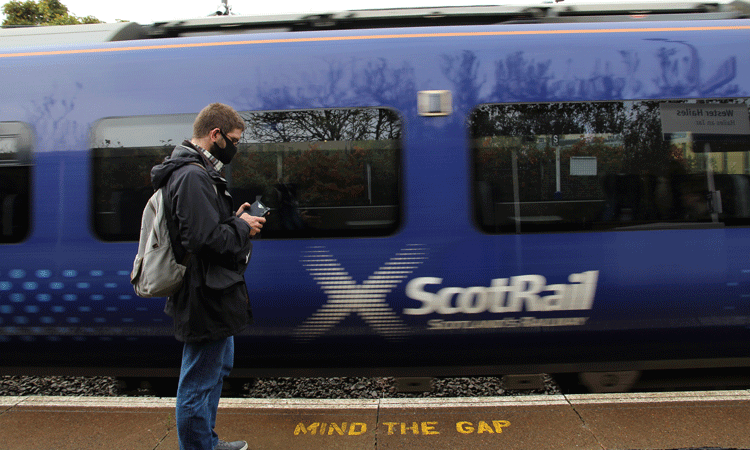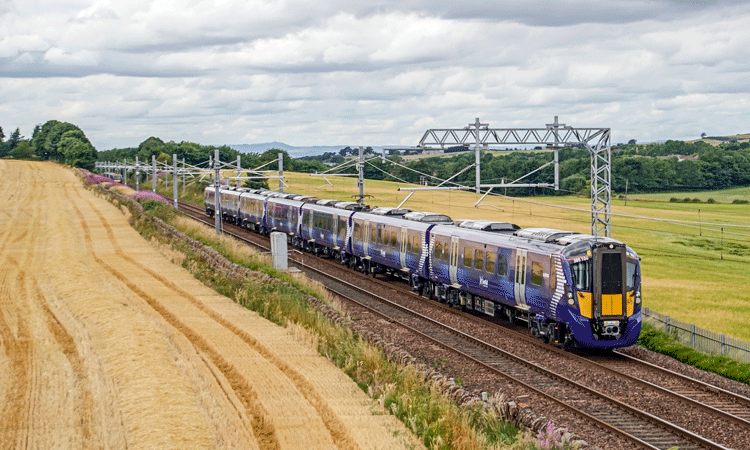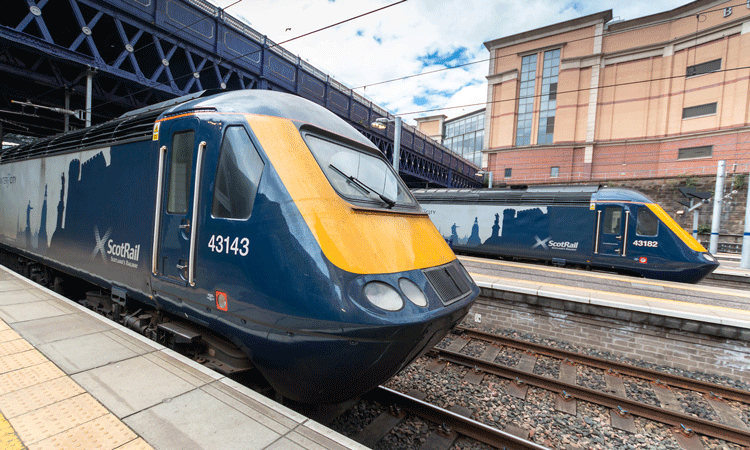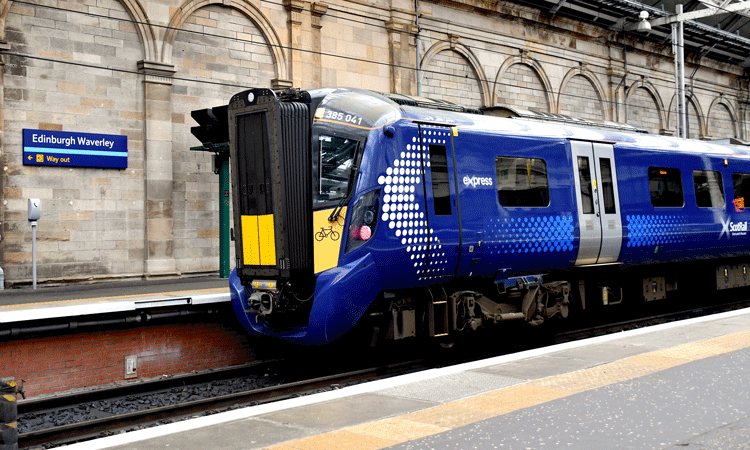Keeping services going throughout the difficulties of COVID-19
Posted: 29 August 2023 | David Simpson | No comments yet
David Simpson, ScotRail’s Service Delivery Director, details the key operational challenges that came with the restrictions imposed by the COVID-19 pandemic, and explains how ScotRail is navigating the road to recovery.


ScotRail is one of Great Britain’s largest train operators, with over 2,100 trains a day serving many different markets. These include the suburban network around Glasgow – the busiest network outside London – our busy network across Scotland’s densely populated central belt, our Inter7City network serving seven of our eight cities (Dunfermline was declared a city after the network was established!) and our rural routes, amongst the most scenic in the world, providing lifeline and tourist services for remote communities.
ScotRail is one of the longest-lived brands in UK rail, having first been introduced by British Rail (BR) in 1983 as a marketing tool, and retained throughout privatisation – it is a very widely recognised name across the country.
In the quarter century since rail privatisation in 1994, ScotRail has been operated by three owning groups – National Express from 1994 to 2004, First Group from 2004 to 2015, then Abellio from 2015 to 2022. In April 2022, ScotRail returned to the public sector, under the direction of Scottish Rail Holdings. Specification and funding of ScotRail had been devolved to Scottish Ministers since 2005, with a different set of priorities and objectives to other train operating companies reflecting Scottish Government strategy.
The network has seen significant expansion over the period, with many lines and stations reopened, including lines to Larkhall, Alloa, Airdrie to Bathgate (providing a fourth direct link between Glasgow and Edinburgh), Borders and, currently in build, Levenmouth. There has also been significant electrification of key routes across the central belt, including the main Edinburgh – Glasgow route, and northwards to Stirling, Alloa and Dunblane.
There has also been investment in rolling stock, including the Hitachi Class 385 EMUs, which are delivering best-in-class reliability, and the refurbished HSTs to operate the Inter7City service, which provide an excellent environment for customers.
As 2019 rolled into 2020, the results of this investment and expansion saw the network in a very positive place, with new services performing well, and new markets being exploited by improved timetables.


ScotRail is one of Great Britain’s largest train operators, with over 2,100 trains a day serving many different markets.
Adapting to change during and after COVID-19
Like the rest of the industry, this growth was brought to a sudden stop by the COVID-19 pandemic and the various lockdowns which ensued throughout that period. New ways of working had to be implemented at very short notice, with the aim of keeping the network open for key workers and others for whom travel was essential, whilst keeping staff and passengers safe.
In Scotland, a Rail Recovery Task Force was set up to lead and co-ordinate the response across the industry. Chaired by ScotRail, this included representation from all parts of the industry, with the main task force including ScotRail, Network Rail, the British Transport Police (BTP), Transport Scotland and Passenger Focus, with several subgroups set up which included a Trade Union Partnership Working Group and a group for cross border and freight operators to make sure they were involved in discussions.
The inclusion of Transport Scotland on the group meant rapid decisions could be taken when necessary, with access to politicians for approval of changes needed, for example to timetables. Passenger Focus’s involvement was also key, enabling their work on passenger surveys during COVID-19 to be fed directly into discussions and decision making.
It is worth noting that the extent and duration of COVID-19 restrictions (such as lockdown and face covering wearing) was often different in Scotland to the rest of the UK, requiring a very agile approach to balance the requirements, especially on cross-border services where rules changed at the border.
During the 18 months or so of significant restrictions, we changed the timetable 14 times to respond to changes in the external environment, which required a completely fresh approach by our train planning teams, who had the added challenge of working remotely, with IT equipment being provided to colleagues’ homes to link into what is necessarily a very centralised and coordinated process. It is to the credit of all involved that this process worked so well, with changes implemented smoothly and communicated effectively to passengers and stakeholders. A guiding principle was to continue to serve all stations on all routes throughout this period, with a key focus on routes to hospitals and other NHS locations.
Across the business there were significant changes. On-board hospitality was stopped, with staff redeployed to deliver enhanced train cleaning. Revenue protection on trains was also stopped. This led to problems with anti-social behaviour on some routes, with BTPs presence on our Task Force vital to dealing with this. Teams across Scotland had to adapt to new ways of working such as physical distancing, with additional accommodation provided to accommodate this.
We created our ‘Five rules for safe travel’, which was widely publicised to passengers, to give confidence that it remained safe to travel by rail (despite some of the government messaging during the pandemic discouraging public transport use).


Inter7City trains
The biggest operational impact when COVID-19 hit was on our driver training programme; around 160 trainees at various stages of training had to be paused because of the inability to achieve physical distancing in-cab. Like many operators, training was restarted under very strict conditions involving training ‘bubbles’ of driver and instructor, with regular COVID-19 testing and other mitigations. Despite this, the training programmes was significantly affected, leading to reduced driver numbers as we emerged from the pandemic – more on this later.
The impact on our passenger numbers from the pandemic was huge, with revenue at one point down to just 9% of what it had been pre-COVID-19. As with other operators, an Emergency Measures Agreement was implemented to enable operations to continue despite the huge loss in revenue.
During the pandemic there were other significant events.
Tragically, in August 2020 the Carmont accident occurred, in which three people – two ScotRail colleagues and a customer – lost their lives when an HST derailed having run through debris from an embankment following a severe storm. This event affected everyone in Scotland’s railway immensely, and managing the aftermath during a pandemic was even more challenging than it would have been.
In 2021, we welcomed the world to Glasgow for COP26, with the railway showcasing many new technologies to achieve carbon reduction, and providing an extensive service for the thousands of delegates and VIPs to use as they attended the event.
The period also saw preparations take place for return to the public sector, with the Abellio franchise due to end in March 2022.
Recovery
As COVID-19 receded and some degree of normality returned to life during 2022, several key priorities emerged for ScotRail and the wider industry, with the objective of recovering passenger numbers, including:
- Changing the timetable to reflect new patterns in demand
- Delivering excellent performance and reliability
- New ways of marketing services and products
- Recovering the driver training programme
- Adapting to becoming a public sector operator.
Our first significant timetable improvement was May 2022’s ‘Fit for the future’ change, which saw a recast of services across the east of the country. This was based on extensive analysis of existing and predicted demand changes, and the biggest ever timetable consultation which ScotRail have ever conducted, generating thousands of comments and suggestions, many of which were reflected in the final timetable implemented. Further timetable improvements took place in December 2022 as more drivers became available, with more planned on routes around Glasgow in May 2023.
These changes reflect a very different demand pattern on ScotRail since the pandemic, with traditional commuter traffic remaining well below previous levels, but leisure and off-peak travel almost fully recovered. Saturday is now our busiest day of the week, and this is reflected by the timetable on our main Edinburgh-Glasgow route now having a more frequent off-peak service on Saturdays than on weekdays. More changes like this will be implemented as demand grows – using the skills learnt during COVID-19 to change timetables more frequently than before when necessary to tap into changing demand patterns.
In parallel with new timetables, we have introduced easier ways to purchase tickets, such as M-tickets on mobile phones, which have had very high levels of take up, with on-board staff now incentivised to scan tickets to reduce fraud. We have also marketed services strongly, focussing on key market segments and supported by a TV campaign starring many of our front-line colleagues and which has achieved very high levels of penetration across the population.


A Class 385 EMU
To support this recovery, there has been a strong focus on train performance – we took the opportunity during COVID-19 to carry out extensive analysis of performance, including some of the basics of the timetable such as sectional running times and junction margins, aimed at building back a more resilient timetable. This has been instrumental in delivering better performances, with a plan now in place to achieve our target of 92.5% PPM.
A key element of performance recovery has been recovering the driver training programme. This has had significant focus since we were able to return to normal training practices, with 117 new drivers passed out in 2022 – ScotRail’s highest ever number, with the programme continuing at a similar level through 2023 to give more resilience and enable improved timetables to be delivered.
Like most operators, ScotRail suffered from the effects of Industrial action in 2022, and whilst we were able to reach agreement with the trade unions on our own pay deal quickly, the national network rail strikes during late-2022 had a significant impact on the business, with services only able to be operated on some routes across the central belt.
The transition to the public sector in April 2022 has led to different ways of thinking about how we deliver the network – Scottish Ministers have been keen to emphasise the public service element of the rail network, and being freed from the relatively short term duration of franchises has enabled a longer term view to be taken of how we develop services and the network, albeit one constrained to a degree by the financial challenges which the whole industry faces over the coming years.
However, there is cause to be positive about the future – Scotland has a commitment to decarbonise rail by 2035, with ambitious plans for further electrification and new technology to achieve this. To support that, there are plans to replace our train fleet, with all but our relatively new Class 380 and 385 units replaced by three new fleets tailored to specific markets: suburban, Inter City and our scenic rural routes. This provides the opportunity to tailor the new fleets to new markets, with features like level boarding seen as essential in the post-pandemic world.
The last three years since the pandemic struck have been amongst the most challenging of any in history for Scotland’s Railway and ScotRail. Our colleagues in the front line have been at the centre of this, keeping services going throughout this period, and continuing to deliver a great service for passengers old and new as we look to the future. Above all, they deserve our thanks and appreciation for all their hard work as we look to respond to the challenges of the future.


Issue
Related topics
Coronavirus/COVID-19, Electrification & Cabling, Passenger Experience/Satisfaction, Regulation & Legislation, Rolling Stock Orders/Developments, Safety, The Workforce






